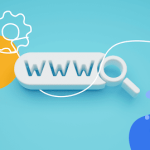Table of Contents
One of the most common ways to host a website is shared hosting. There is a high chance that you will choose shared hosting for your website if you’re a small business.
Shared hosting is quite popular due to the fact that it is suitable for sites with little traffic, and it’s pretty affordable. However, there are some concerns that come with this type of hosting, just like with any other types of hosting. Make sure you continue reading our article to find out more about the security of shared hosting.
What Is Shared Hosting?

Shared Hosting is a web hosting solution that allows multiple websites to share the resources of a single physical server. Each website receives a limited share of resources issued to it by its hosting server. The availability of resources for each of these websites differs from plan to plan. With every higher plan of Shared Hosting, you get more resources, but you also pay more for those.
Because of this sharing of resources, the security of your website hosted on a shared server is of paramount importance. Not only do you have to safeguard your website against viruses and malware, but also hacking attempts. As a hosting platform, Shared Hosting can be secured against all known cyber threats. Almost all Shared Hosting providers secure their services with a robust security system. Let’s take a look at the measures that are used to secure Shared Hosting.
Preventing DDoS attacks
A DDoS (Distributed Denial-of-Service) attack is a sort of cyberattack in which a malicious actor floods your server with traffic, depleting server resources and keeping valuable resources from getting to your website. This inevitably leads to downtime.
Since websites already share server resources, which means that resources are already limited, and because if even one website on the server is attacked, this could have an effect on the other websites on the server, this is a weakness of shared servers in particular.
It is essential to find a web host that offers DDoS attack security capabilities that can recognize the beginning of a DDoS attack and take action to stop it.
Two-factor Authentication
Two-factor authentication sounds complicated, but it actually refers to a very simple concept: It means that before you can be granted access to any area of your website, you’ll need to take two steps to prove that you’re authorized to do so.
It’s kind of like how instead of accessing your money from an ATM by only proving you have the physical card or only entering the right PIN, you have to do both.
Using Two-factor Authentication makes your website more secure.
Strong passwords
It’s easy to get complacent when we choose passwords, but don’t overlook the importance of choosing a strong password. The aim is to choose a password that even the people closest to you would never be able to guess. This means no children’s birthdays, no anniversaries, and no titles of your favorite Netflix series.
Choose a password that’s preferably lengthy, and has a random combination of numbers, letters and symbols. Bonus points if you use uppercase and lowercase letters.
Regular updates
It might not be immediately clear what updating your website’s software and plugins has to do with your security, but updates are actually a powerful means of protecting your website from hackers.
You see, developers sometimes update software and plugins solely because they’ve discovered that the old versions are somehow vulnerable to hackers.
When you don’t update yours, your website retains the vulnerability, and your website can be hacked. So, keep your software and plugins up to date.
SSL certificates

An SSL certificate is a file that encrypts data that’s sent between your website and your visitors’ browsers. When you install an SSL certificate, you make it so that even if cybercriminals manage to get through all your website’s defenses, the data they steal is incomprehensible and useless to them.
That’s why an SSL certificate is essential to your website: It will end up being your website’s last line of defense against hacking and data leaks.
What to Do If Your Shared Hosting Account Is Compromised

If you suspect or confirm that your shared hosting account has been compromised, it’s crucial to take immediate action to minimize damage, protect sensitive information, and restore the security of your website. Here’s a step-by-step guide on what to do if your shared hosting account is compromised:
- Isolate the Affected Account:
- Contact your hosting provider as soon as possible and inform them of the suspected compromise. They can help you isolate the affected account to prevent further damage and investigate the issue.
- Change Passwords:
- Change the passwords for all accounts associated with your hosting account, including your hosting control panel, FTP, and any CMS (Content Management System) or database accounts. Use strong, unique passwords for each account.
- Scan for Malware and Vulnerabilities:
- Perform a thorough malware scan on your website files and directories. Many hosting providers offer security tools or scanning services that can help identify and remove malicious code. Additionally, scan your website for vulnerabilities that may have been exploited.
- Update Software:
- Ensure that all software, including your CMS, plugins, themes, and any other applications, is up-to-date. Often, attackers exploit known vulnerabilities in outdated software, so keeping everything updated is essential.
- Review and Restore Backups:
- If you have backups of your website, review them to find a clean version from before the compromise. Restore your website using the clean backup files to eliminate any malicious code.
- Check User Accounts:
- Review the user accounts associated with your hosting account and delete any unauthorized or suspicious accounts. Ensure that only necessary accounts with appropriate permissions exist.
- Monitor Website Activity:
- Set up monitoring tools to keep an eye on your website’s traffic and file changes. Unusual activity may indicate ongoing or repeated attacks.
- Implement Security Measures:
- Enhance your website’s security by implementing additional measures such as a Web Application Firewall (WAF), regular security audits, and two-factor authentication (2FA) for critical accounts.
- Inform Users and Stakeholders:
- If your website has users or customers, inform them about the security incident, provide guidance on any necessary actions they should take, and reassure them about the steps you are taking to address the issue.
- Review Logs and Forensics:
- Review server logs and conduct forensic analysis to understand how the compromise occurred. Identify and address the root cause to prevent future incidents.
- Collaborate with Hosting Provider:
- Work closely with your hosting provider to understand the extent of the compromise and implement any additional security measures they recommend. They may have insights into the attack vector and can provide guidance on securing your account.
- Consider Professional Help:
- If the compromise is severe or if you’re unsure about the extent of the damage, consider hiring a professional security expert or consulting with your hosting provider’s security team for assistance.
Basic Precautions for Shared Hosting

When using shared hosting, where multiple users share the same server resources, it’s essential to take basic precautions to enhance the security and stability of your website. Here are some fundamental precautions to consider:
- Keep Software Updated:
- Regularly update your website’s software, including the content management system (CMS), plugins, themes, and any other applications. Outdated software can have vulnerabilities that attackers may exploit.
- Use Strong Passwords:
- Choose strong and unique passwords for all your accounts, including your hosting control panel, FTP, CMS, and database accounts. Avoid using easily guessable passwords and consider using a combination of uppercase and lowercase letters, numbers, and special characters.
- Enable Two-Factor Authentication (2FA):
- Whenever possible, enable two-factor authentication for your hosting account and any other accounts associated with your website. This adds an extra layer of security by requiring a second form of verification in addition to your password.
- Regular Backups:
- Perform regular backups of your website’s files and databases. Store backups in a secure location, separate from your hosting account. In case of a compromise, having recent backups ensures you can quickly restore your website to a clean state.
- Monitor Website Activity:
- Set up monitoring tools to track your website’s traffic, file changes, and other relevant activities. Unusual patterns or unexpected changes may indicate a security issue that requires attention.
- Use Secure File Transfer Protocols:
- When transferring files to and from your hosting account, use secure protocols such as SFTP (Secure File Transfer Protocol) or SSH (Secure Shell). Avoid using plain FTP, which transmits data in an unencrypted format.
- Implement Security Plugins:
- Depending on your CMS, consider using security plugins or extensions that add an extra layer of protection. These plugins may offer features like firewall protection, malware scanning, and intrusion detection.
- Regular Security Audits:
- Conduct regular security audits of your website to identify vulnerabilities and address them promptly. This can include reviewing access logs, file permissions, and configurations.
- Limit User Permissions:
- Only provide necessary permissions to users, whether they are administrators, editors, or contributors. Avoid using overly permissive settings to minimize the impact of a potential compromise.
- Understand Hosting Provider Security Features:
- Familiarize yourself with the security features provided by your hosting provider. Many hosting companies offer firewalls, intrusion detection systems, and other security measures. Take advantage of these features to enhance your website’s security.
- Be Wary of Third-Party Scripts:
- Carefully vet and only use trusted third-party scripts, plugins, or themes. Malicious code embedded in third-party components can compromise the security of your website.
- Regularly Review Access Logs:
- Monitor access logs to identify any suspicious or unauthorized access to your website. Investigate and address any unusual activity promptly.



